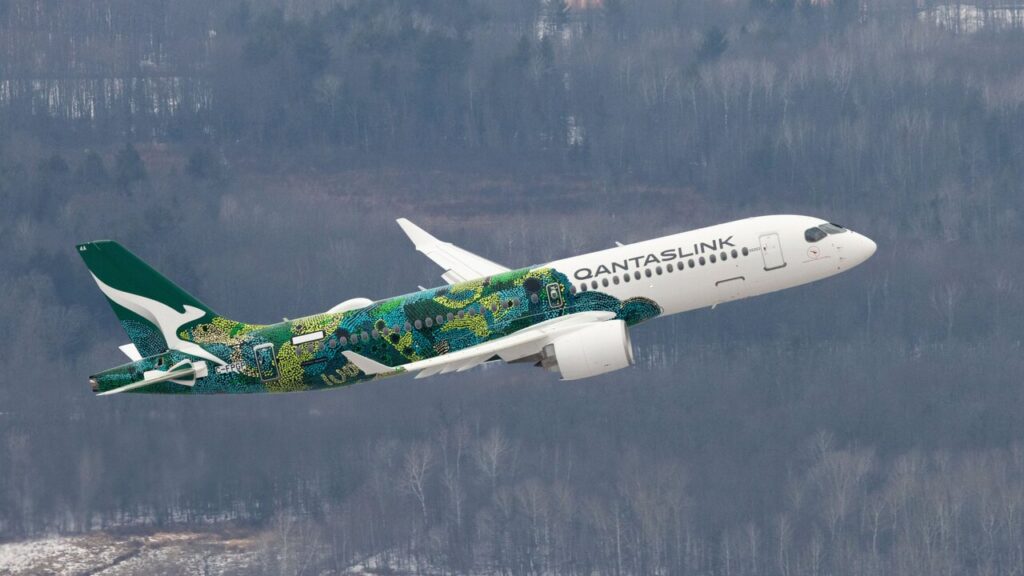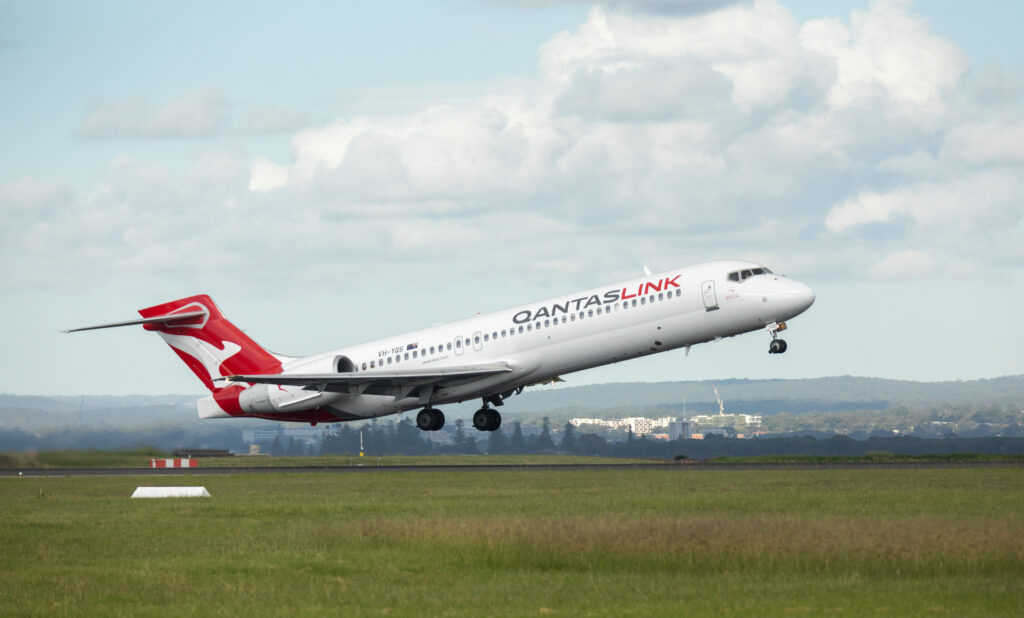SYDNEY- The Qantas Group-backed QantasLink (QF) final Boeing 717 completed its last commercial flight today (October 26, 2024), landing in Canberra (CBR) at 18:00, concluding a significant chapter in Australian aviation history.
Flight QF1511 operated by aircraft ‘Great Otway National Park’ (VH-YQS) connected Sydney (SYD), Launceston, and Canberra on its farewell journey.

Qantas Bids Farewell to 717
The veteran crew commanding the final flight brought over 100 years of combined Boeing 717 flying experience to the historic occasion. Their expertise reflects the deep connection between QantasLink’s personnel and this versatile aircraft.
‘Great Otway National Park’ served as a workhorse for QantasLink, accumulating more than 15,000 flights and 17,000 flight hours while transporting over one million passengers during its nearly 11-year tenure. The aircraft will remain in Canberra until its formal retirement in November.
The Boeing 717 fleet served both QantasLink and Jetstar operations for more than two decades, establishing itself as a crucial component of Australia’s regional aviation network. QantasLink stands among the final three commercial airlines worldwide still operating this aircraft type.
The Boeing 717’s success stemmed from its unique market position, offering the perfect balance of capacity and capability. The aircraft’s ability to serve high-frequency routes while accommodating approximately 100 passengers made it ideal for connecting regional Australian destinations.

A220 Aircraft Replaces 717
QantasLink has started a major fleet transformation, replacing its 20 Boeing 717 aircraft with 29 new Airbus A220s, marking a strategic shift in the airline’s domestic and regional operations.
The change forms a vital part of the Qantas Group’s extensive fleet renewal strategy, designed to reshape Australian aviation networks into the next decade.
The airline currently operates four A220 aircraft, with the fifth aircraft, named ‘Tasmanian Devil’, scheduled to commence operations by year’s end. This modernization represents a significant upgrade in both capacity and capability for regional routes.
QantasLink CEO Rachel Yangoyan emphasized the Boeing 717’s historic significance in Australian aviation. “The 717’s distinctive T-shaped tail has become a symbol of regional connectivity across Australia,” Yangoyan stated. “These aircraft launched Jetstar’s inaugural flights in 2004 and served as vital links between major cities, regional communities, and Western Australia’s mining sector.”
The A220’s introduction brings substantial operational improvements to QantasLink’s network. The new aircraft doubles the fleet’s range capabilities while reducing emissions per seat.
Early passenger and crew feedback indicates strong satisfaction with the A220’s enhanced comfort and modern amenities.

End of the Era
The Boeing 717, initially marketed as the McDonnell Douglas MD-95 in the early 1990s, earned its “Mad Dog” nickname through its distinctive engine roar and powerful performance.
Boeing manufactured 156 units at its Long Beach facility in California, concluding production in 2006 with the YQW “Tassie Devil” aircraft.
Qantas integrated the 717 into its operations following the 2001 acquisition of Impulse Airways.
The aircraft demonstrated remarkable versatility, with fourteen units supporting Jetstar’s 2004 launch before returning to QantasLink service, showcasing the platform’s adaptability across different airline business models.
Stay tuned with us. Further, follow us on social media for the latest updates.
Join us on Telegram Group for the Latest Aviation Updates. Subsequently, follow us on Google News

